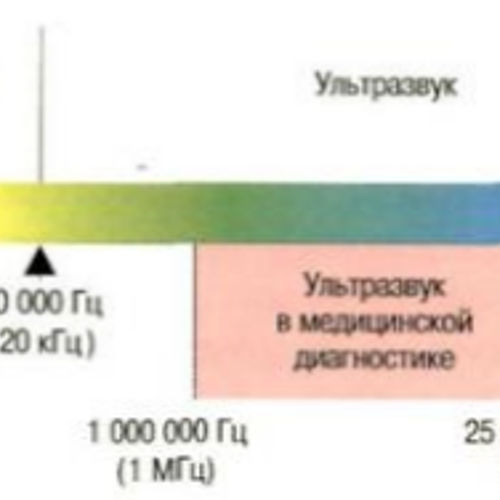
| Added | Thu, 06/10/2016 |
| Sources | |
| Феномены | |
| Version type |
This version includes sound waves that are not perceived by the human ear, but are felt in other ways.
Ultrasound — sound waves that have a frequency higher than that perceived by the human ear, usually referred to as ultrasound frequencies above 20,000 Hertz.
In nature, UZ occurs both as components of many natural noises (in the noise of wind, waterfall, rain, in the noise of pebbles rolled by the sea surf, in sounds accompanying thunderstorms, etc.), and among the sounds of the animal world. Some animals use ultrasonic waves to detect obstacles, navigate in space, and communicate (whales, dolphins, bats, rodents, and tarsiers).
The first ultrasonic whistle was made in 1883 by the Englishman Francis Galton. It is mainly used for giving commands when training dogs and cats.
Ultrasound affects a person through air, through liquid and solid media.
Human impact of ultrasound:
- causes functional disorders of the nervous system,
- headache;
- changes in blood pressure, blood composition and properties;
- loss of auditory sensitivity;
- increased fatigue.
The effect of ultrasound on the human body: changes that Occur under the influence of ultrasound (air and contact) follow a General pattern: low intensities stimulate and activate, while medium and large ones depress, inhibit and can completely suppress functions.
The most studied biological effect of ultrasound in contact with it. In the experiment, it was found that ultrasonic vibrations, penetrating deeply into the body, can cause serious local disorders in the tissues: an inflammatory reaction, hemorrhages, and at high intensity – necrosis.
Among those working with contact ultrasound sources, a high percentage of complaints about the presence of paresthesias, increased sensitivity of the hands to cold, a feeling of weakness and pain in the hands at night, reduced tactile sensitivity, sweating of the palms were noted. There are also complaints of headaches, dizziness, noise in the ears and head, General weakness, palpitations, pain in the heart.
Diencephalic disorders (weight loss, a sharp rise in blood sugar with a slow drop to the initial level, hyperthyroidism, increased mechanical excitability of muscles, itching, paroxysmal attacks such as visceral crises) are sometimes observed in individuals who have been engaged in experimental work on ultrasound installations for a long time. There are frequent violations of the peripheral nervous system, numbness, a decrease in all types of sensitivity such as short and long gloves, hyperhidrosis. There is also a decrease in hearing and peculiar disorders on the part of the vestibular apparatus.
Infrasound — sound waves that have a frequency lower than that perceived by the human ear. The upper limit is taken as the frequency of 16-25 Hz, the lower limit is not defined.
It is contained in the noise of the atmosphere and the sea. Its source is atmospheric turbulence and wind, lightning discharges (thunder), explosions,and gunfire. In the earth's crust, there are concussions and vibrations from a wide variety of sources.
Some household appliances may also be a source. At a level of 110 to 150 dB or more, infrasound can cause unpleasant subjective sensations and numerous reactive changes in people, including changes in the Central nervous, cardiovascular and respiratory systems, and the vestibular analyzer.
Infrasound can cause a person both positive emotions (joy, awe) and negative ones (fear, panic, anxiety).
A person feels:
- feelings of anxiety, longing, uncertainty, or panic;
- attacks of seasickness and / or dizziness
- headache, up to the feeling that the head is about to break into small pieces
- the horizon will start to "break", there are problems with orientation in space
- feeling cold, shivering and " goosebumps"
- hallucinations
"Voice of the sea» - infrasound waves (frequency about 10 Hz) that occur over the agitated surface of the sea in a strong wind as a result of eddy formation behind the wave crests. Spreading over long distances from the place of origin, this characteristic sound can serve as a harbinger of a storm. The "voice of the sea" is perceived by a person as a low-pitched hum.
Interestingly, these sound frequencies are perceived by other living organisms. In particular, dogs and cats. Sometimes their reaction to these sounds can be perceived as contact with the other world.
Related facts
Related news
Related articles
Log in or register to post comments











